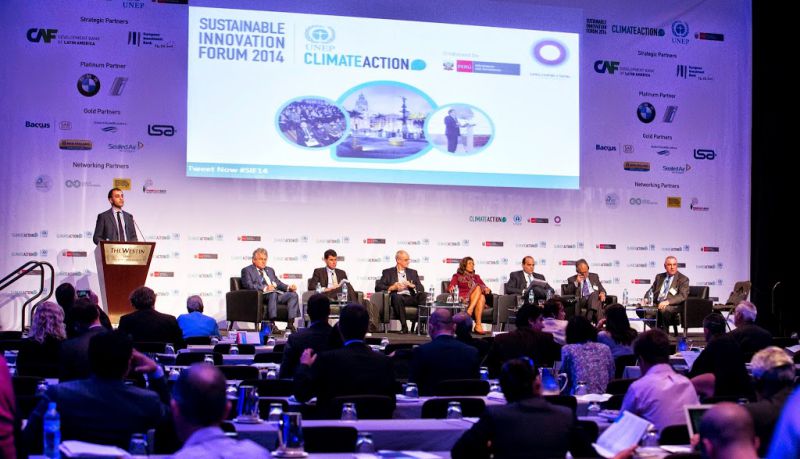By: Jan Piotrowski
Send to a friend
The details you provide on this page will not be used to send unsolicited email, and will not be sold to a 3rd party. See privacy policy.
It is not hyperbole to say that this year’s annual meeting of the UN Framework Convention on Climate Change (UNFCCC) is make or break. After the high-profile failures of Copenhagen and Warsaw, the Paris conference is realistically the last chance to show the UN can lead the fight against dangerous climate change.
Success could see a meaningful change in this planet’s emissions trajectory. Failure could resign the UN body to the history books as a doomed annual event of the “frequent flyers club” — an unflattering label I heard on conference sidelines, referring to the high emissions caused by the large amount of international travel racked up by its attendants.
Negotiations in Bonn, Germany, in October produced a menu for world leaders to choose from over the next two weeks. It is a text notable for its almost complete lack of concrete decisions — heavily bracketed paragraphs appear more like multiple choice exam questions than coherent strategy.
Any successful treaty will be judged by the reduction of greenhouse gas emissions that it demands.
Jan Piotrowski
While this could reflect the failure of negotiators to find common ground, there is a flip side. With everything still on the table, it shows that parties want to negotiate — a desire not always evident during previous Conference of the Parties (COP) meetings. A last-minute compromise to get the unilateral agreement needed can still be achieved.
Any successful treaty will be judged by the reduction of greenhouse gas emissions that it demands. Current voluntary pledges on the table from 183 countries that have submitted plans to cut emissions still fall way short of preventing a two degree Celsius rise. But add to this possible reductions from local authorities and the private sector, and that golden figure draws closer.
But should poor countries be asked to reduce emissions as much as their richer counterparts? It is a thorny issue on which negotiations have consistently run aground and one on which both sides seem unwilling to yield. One suggestion in the text provides a middle ground by making developing countries’ pledges conditional on receiving the necessary financial and technological support to do so.
This could include tech transfer and capacity building, both of which have whole sections of the draft text dedicated to them. This is an implicit nod to the role research and technology will play in any successful transition to a more sustainable world. The announcement yesterday of 20 major economies promising to double their R&D spending to improve access to clean energy adds further proof of this focus.
Who will pay for what is another sticking point. In Copenhagen in 2009, nations pledged US$100 billion by 2020 to help developing countries adapt to climate change. The problem is, nothing is in place to extend the life of this fund beyond this date.
Then there is the problem that the countries most likely to be affected by climate change-related disasters are also the poorest. Rich nations are unlikely to go along with the idea of committing to paying for loss and damage outside their borders. But with developing world leaders such as Niger’s president, Mahamadou Issoufou, adamant that they will vote against an agreement unless sufficient money is put on the table, clearly one side will have to give.
But the feeling that something can be achieved this time round is underlined by the unusual step of world leaders gathering at the beginning of this COP rather than at the end. The Copenhagen event was crippled by delegations reaching an impasse that only discussion at the highest level could solve. This time round, heads of states will set out their desires early — leaving it up to negotiators to achieve them.
COP 21 will not be defined by political grandstanding. It will live and die by the strength of the agreement put down on paper. Now, with the eyes of the world on Paris, can the UNFCCC prove it is fit for purpose?














